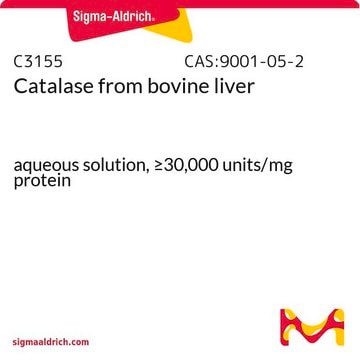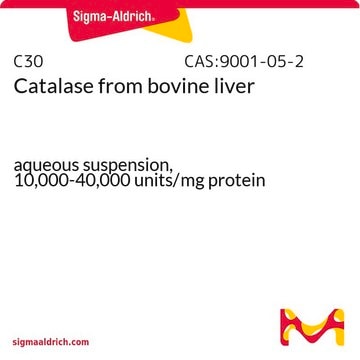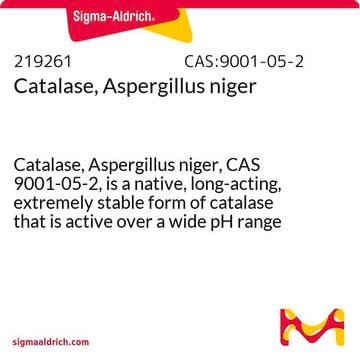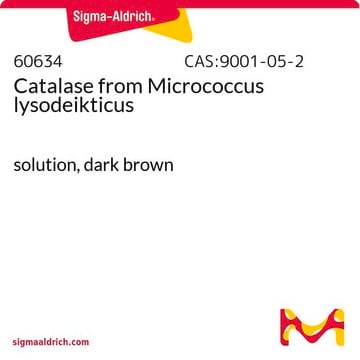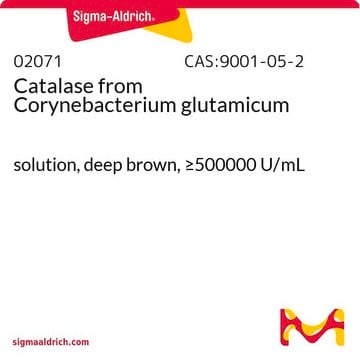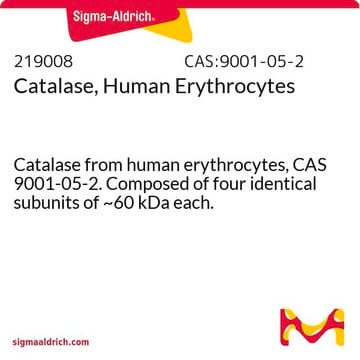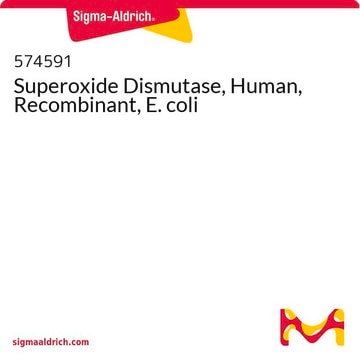C3515
Catalase from Aspergillus niger
ammonium sulfate suspension, ≥4,000 units/mg protein
Synonym(s):
H2O2:H2O2 oxidoreductase
About This Item
Recommended Products
biological source
Aspergillus niger
form
ammonium sulfate suspension
specific activity
≥4,000 units/mg protein
mol wt
tetramer ~250 kDa
storage condition
(Tightly closed)
technique(s)
FISH: suitable
shipped in
wet ice
storage temp.
2-8°C
InChI
1S/C9H10O3/c1-2-12-9(11)7-3-5-8(10)6-4-7/h3-6,10H,2H2,1H3
InChI key
NUVBSKCKDOMJSU-UHFFFAOYSA-N
General description
Catalase is an active enzyme present in aerobic organisms. It is a ferric hemoprotein and a tetramer.
Application
- as a positive control during the functional characterization of Clostridium difficile spore coat proteins.
- as a component of the catalase solution to prepare GLOX buffer with enzymes to maintain the embryos of Caenorhabditis elegans before single-molecule fluorescence in situ hybridization (smFISH) studies
- as a component of the imaging buffer for stochastic optical reconstruction microscopy (STORM) imaging of platelet-rich plasma
- as a supplement in Todd Hewitt media plus 0.5 % yeast extract (THY) media for the neutralization of pneumococcal H2O2
Biochem/physiol Actions
Caution
Unit Definition
Physical form
Analysis Note
antibody
enzyme
inhibitor
Storage Class Code
12 - Non Combustible Liquids
WGK
WGK 1
Flash Point(F)
Not applicable
Flash Point(C)
Not applicable
Certificates of Analysis (COA)
Search for Certificates of Analysis (COA) by entering the products Lot/Batch Number. Lot and Batch Numbers can be found on a product’s label following the words ‘Lot’ or ‘Batch’.
Already Own This Product?
Find documentation for the products that you have recently purchased in the Document Library.
Customers Also Viewed
Articles
Instructions for working with enzymes supplied as ammonium sulfate suspensions
Protocols
This procedure may be used for all Catalase products.
Our team of scientists has experience in all areas of research including Life Science, Material Science, Chemical Synthesis, Chromatography, Analytical and many others.
Contact Technical Service

